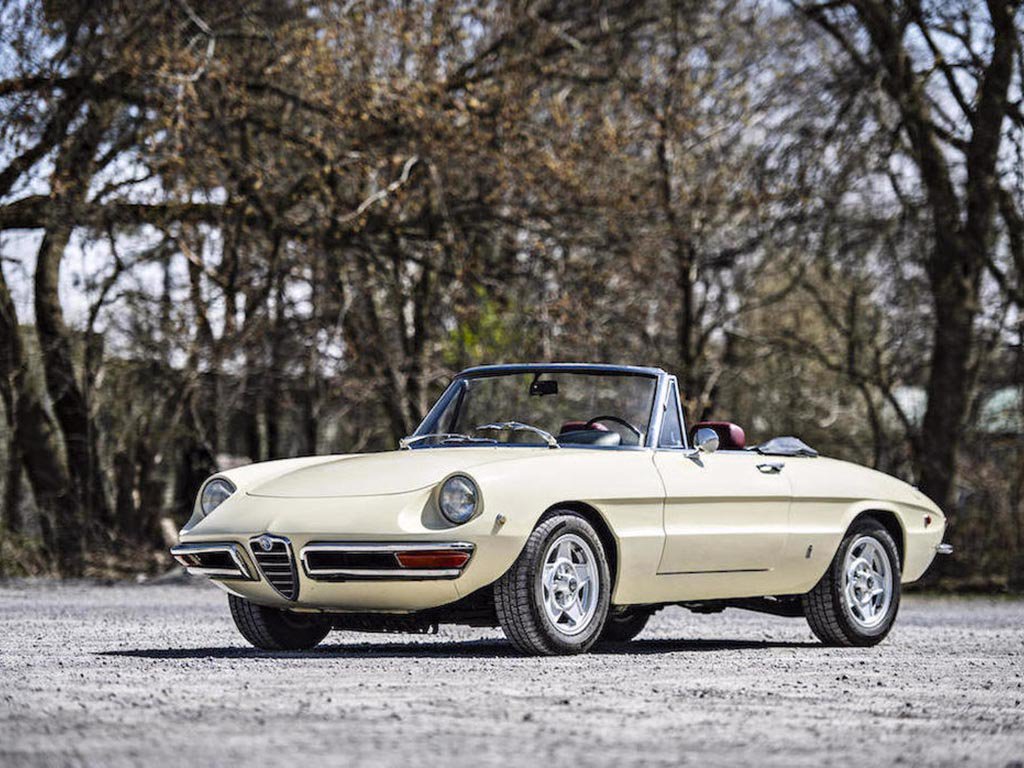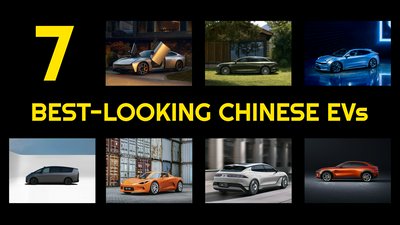techXXX
Eleven Classic Alfa Romeo Vehicles That You'll Lust After
Alfa Romeo was the winningest pre-war automaker, beating legendary marques such as Bugatti, Maserati, Mercedes, and Auto Union. Today, I briefly go over 11 classic Alfa Romeo vehicles that you will appreciate as an enthusiast.
Published by Dr Jiulin Teng on 05 Aug 2024
Keywords: alfa-romeoclassic-car

Alfa Romeo was the winningest pre-war automaker, beating legendary marques such as Bugatti, Maserati, Mercedes, and Auto Union. Unfortunately, it was forced to withdraw from Formula One after winning the first two post-war Grand Prix seasons. Over its century-long history, Alfa Romeo has contributed greatly to the internal combustion engine, being the first to feature double overhead cam in 1914, electronic fuel injection in 1940, and variable valve timing in 1983. It has introduced numerous iconic designs by Bertone, Italdesign, Pininfarina, and Zagato. Today, I briefly go over 11 classic Alfa Romeo vehicles that you will appreciate as an enthusiast.

6C 1750
- 1929-1933
The 6C 1750, as its name suggests, is powered by a 1.75L inline-6 engine paired to a 4-speed manual transmission. The base model used a SOHC head, while the Super Sport and Gran Sport versions used twin cam heads. A supercharger was also available. During its production, the 6C 1750 was one of the most successful vehicles in motor racing.
It may be worth noting that the pre-war Alfas on this list were coach-built vehicles with only the rolling chassis supplied by Alfa Romeo.

8C 2900
- 1935-1938
The 8C 2900 is powered by a 2.9L inline-8 supercharged engine paired to a 4-speed manual transmission. It was the final iteration of the road-going version of Alfa Romeo’s most iconic racing cars. The length of the inline-8 block necessitated an exceptionally long engine bay, which makes the 8C one of the most recognizable and collectible pre-war European luxury vehicles today.

6C 2500
- 1938-1952
The 6C 2500 is powered by a 2.44L inline-6 engine paired to a 4-speed manual transmission. The Super Sport version had three Weber carburetors. As it was the last pre-war model from Alfa Romeo’s top-of-the-line range, which was the Ferrari before Ferrari existed as an automaker, the 6C 2500 is one of the most collectible pre-war European vehicles with a list of storied owners.

2600 Sprint / Spider / Sprint Zagato
- 1962-1968
The 2600, Type 106, was the last Alfa Romeo to be fitted with the company’s legendary DOHC inline-6 engine, displacing 2.6L, paired to a 5-speed manual transmission. While the sedan version, 2600 Berlina, felt more ordinary than Maserati Quattroporte of the day, the two-door 2600 Sprint designed by Bertone, 2600 Spider designed by Carozzeria Touring, and the 2600 Sprint Zagato represented the pinnacle of Italian exotics in the 1960s.

Giulia Sprint GTA
- 1965-1969
The Type 105 Giulia Sprint was a small 2+2 coupe powered by a Twin Cam inline-4 engine paired to a 5-speed manual transmission. The body shape was heavily influenced by the 2600 Sprint and designed at Bertone by Giorgetto Giugiaro, who would start Italdesign soon afterwards. The Giulia Sprint GT was the sport model with two twin-choke Weber Carburettors. It featured four Brembo disc brakes. The ultimate model was the Giulia Sprint GTA, with the “A” standing for “Alleggerita”, as a homologation special. This meant that the GTA had aluminum body panels bonded and riveted to the inner steel chassis, magnesium alloy wheels, plastic side windows, and other weight-saving modifications. The car weighed under 3/4 ton.

Spider
- 1966-1993
The Alfa Romeo Spider was based on the Type 105 Giulia and remained in production long after the latter was replaced by the Type 116 Giulietta. It used Alfa’s mainstay Twin Cam inline-4 engine between 1.3L and 2.0L paired to a 5-speed manual transmission. For the first three Series, the European models used carburetors, while the US models had mechanical fuel injection and then Bosch electronic fuel injection. The final Series all used Bosch electronic fuel injection. The first three Series were designed by Pininfarina.

33 Stradale
- 1967-1969
The 33 Stradale was an ultra-rare mid-engine sports car based on the Alfa Romeo Tipo 33 race car prototype. It was the most expensive car for sale in 1968 at $17000. The 33 Stradale was powered by a 2L V8 engine paired to a 6-speed manual transmission. The V8 featured a flat-plane crankshaft, dry-sump lubrication, mechanical fuel injection, and twin-spark ignition. It had a rev limit of 10k and a compression ratio of 10.5:1. The 33 Stradale had an aluminum body and an aluminum tubular chassis, magnesium alloy wheels, and inboard rear brake discs. The weight-saving measures resulted in a car that weighed just 700kg.

Montreal
- 1970-1977
The Alfa Romeo Montreal was based on a concept car introduced at the 1967 Montreal Expo and designed by Bertone, though the production car looked quite different. It was powered by a 2.6L V8 derived from the 2.0L unit of the 33 Stradale, featuring a cross-plane crankshaft and a lower rev limit. A 5-speed manual transmission and more ordinary construction were used. At the time, the Montreal was more expensive than the Jaguar E-Type.

SZ
- 1989-1991
The SZ, meaning Sprint Zagato, was an homage to the Giulia Sprint Zagato of the 1960s, though it was designed by FIAT. It introduced Alfa Romeo’s now classic 3+3 headlamp setup. Mechanically, the car was based on the Alfa Romeo 75 and was powered by a 3.0L Busso V6 engine paired to a 5-speed manual transmission. It featured composite body panels and a racing suspension setup. Alfa Romeo also made the RZ, Roadster Zagato, based on the same design.

156 GTA
- 2001-2005
After its acquisition by FIAT in the 1980s, Alfa Romeo fell from an exotic automaker to a mass-market brand. The 156 was one of the more loved designs of the decades-long slump. The 156 GTA was a high-performance version that featured the 3.2L 24-valve Busso V6 engine. Interestingly, the GTA was not only not lighter but actually heavier than the standard V6 156. The car was designed at Centro Stile Alfa Romeo by Walter de Silva, who then became Volkswagen’s head of design.

8C Competizione
- 2007-2010
The 8C Competizione pays homage in its naming to the legendary Alfa Romeo 8C, though it uses a V8 rather than inline-8 engine. In this case, it was the F136 YC wet sump 4.7L version similar to the one found in the Maserati GranTurismo S paired to a 6-speed automated manual transaxle. However, the 8C was a considerably more exclusive model with carbon fiber body shells, a unique, much shorter and lighter chassis, and Brembo carbon ceramic brakes. The 8C was assembled at Maserati’s factory in Modena. In true Alfa Romeo fashion, an 8C Spider was also produced.



